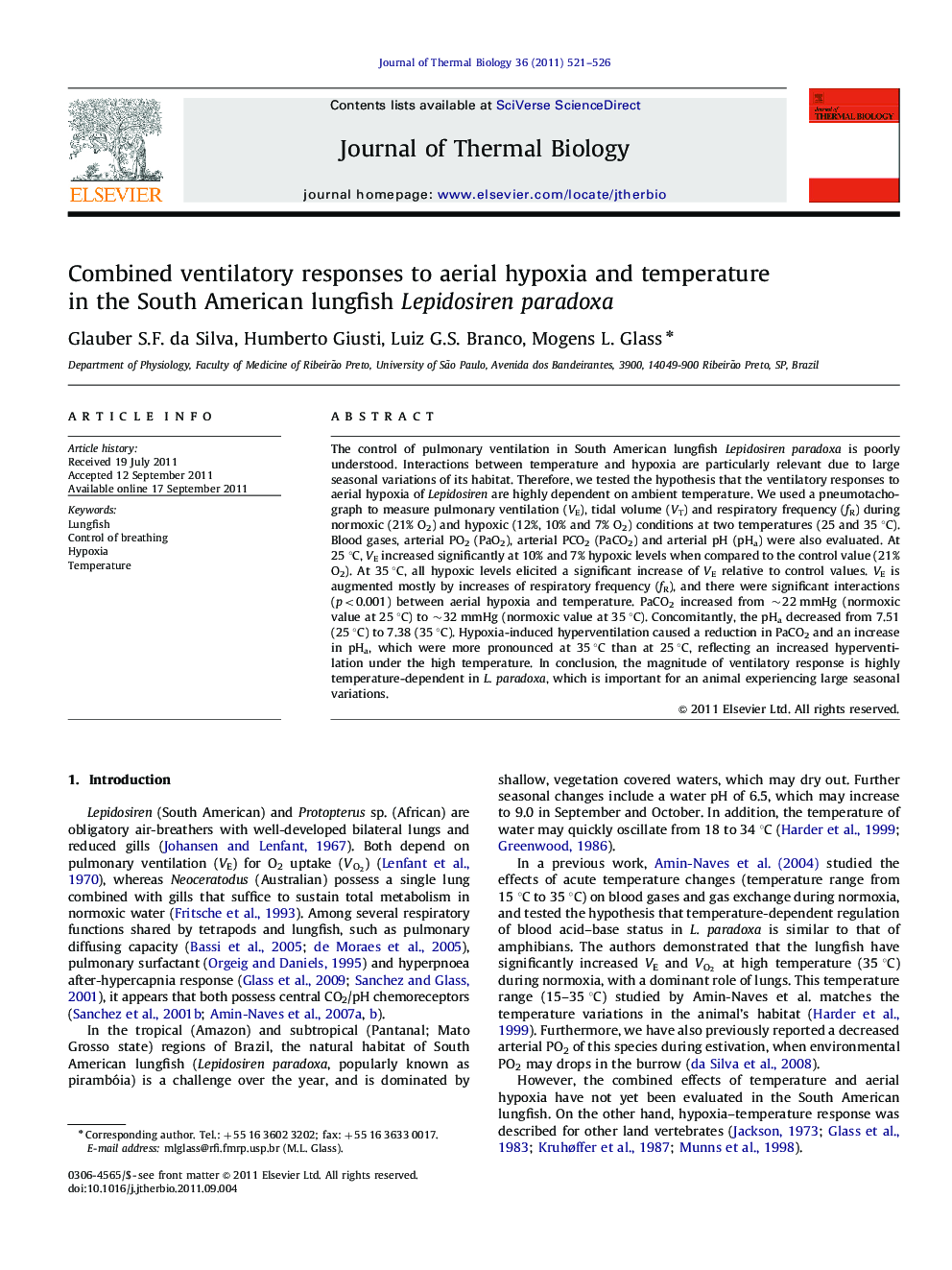| Article ID | Journal | Published Year | Pages | File Type |
|---|---|---|---|---|
| 2843266 | Journal of Thermal Biology | 2011 | 6 Pages |
The control of pulmonary ventilation in South American lungfish Lepidosiren paradoxa is poorly understood. Interactions between temperature and hypoxia are particularly relevant due to large seasonal variations of its habitat. Therefore, we tested the hypothesis that the ventilatory responses to aerial hypoxia of Lepidosiren are highly dependent on ambient temperature. We used a pneumotachograph to measure pulmonary ventilation (VE), tidal volume (VT) and respiratory frequency (fR) during normoxic (21% O2) and hypoxic (12%, 10% and 7% O2) conditions at two temperatures (25 and 35 °C). Blood gases, arterial PO2 (PaO2), arterial PCO2 (PaCO2) and arterial pH (pHa) were also evaluated. At 25 °C, VE increased significantly at 10% and 7% hypoxic levels when compared to the control value (21% O2). At 35 °C, all hypoxic levels elicited a significant increase of VE relative to control values. VE is augmented mostly by increases of respiratory frequency (fR), and there were significant interactions (p<0.001) between aerial hypoxia and temperature. PaCO2 increased from ∼22 mmHg (normoxic value at 25 °C) to ∼32 mmHg (normoxic value at 35 °C). Concomitantly, the pHa decreased from 7.51 (25 °C) to 7.38 (35 °C). Hypoxia-induced hyperventilation caused a reduction in PaCO2 and an increase in pHa, which were more pronounced at 35 °C than at 25 °C, reflecting an increased hyperventilation under the high temperature. In conclusion, the magnitude of ventilatory response is highly temperature-dependent in L. paradoxa, which is important for an animal experiencing large seasonal variations.
► Control of pulmonary ventilation in South American lungfish Lepidosiren paradoxa. ► Studied hypoxic ventilatory responses of Lepidosiren at different temperatures. ► Hypoxia exposure elicited a significant increase of VE. ► Magnitude of hypoxic ventilatory response is temperature-dependent in Lepidosiren. ► This is an important feature for an animal experiencing large seasonal variation.
